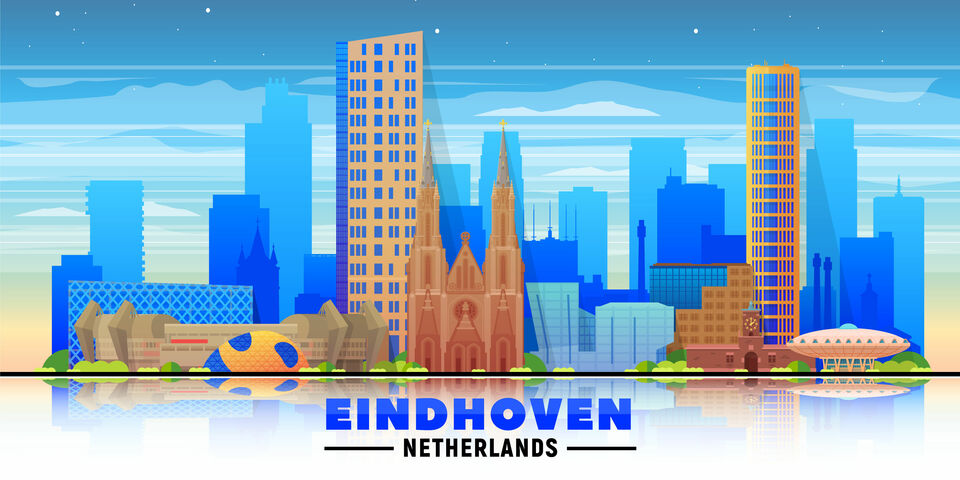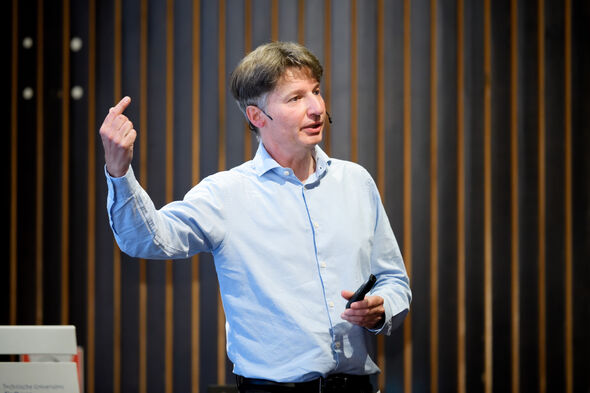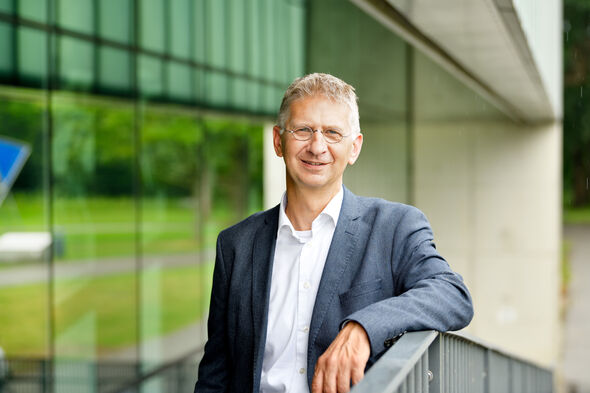Prof Talk | How can Eindhoven meet its climate targets?
Rik Thijs (GroenLinks), Eindhoven’s new alderman responsible for Climate & Energy, recently stated that the municipality needs help from TU/e, among others, if it wants to meet the local climate targets for 2030. Experts David Smeulders (Mechanical Engineering) and Theo Salet (Built Environment) explain how TU/e can help the municipality of Eindhoven - and the rest of the world - reduce CO2 emissions.
David Smeulders, professor of Energy Technology, advises the alderman to wait for the findings of an extensive report by the Netherlands Environmental Assessment Agency (PBL). “That should be available to the municipality by now, and I understand that it will be available to the public at the end of the month.” The PBL report calculates what it will cost the local and national administrations to implement sustainable heat supply per residential area in the Netherlands.
“The PBL analyzes the options of green gas, fully electrical, heat grids at high and low temperatures, a combination of gas and electricity, and a mix of all of the above. An update that includes hydrogen and aquathermia as well as the costs for the public, is planned for March 2020. After that, I would advise the municipality of Eindhoven to look at how we as a university can help in each individual residential area.”
Gas as an option
Smeulders emphasizes that the PBL includes the option of gas as a heat source in its analysis. The government, he says, is becoming more and more aware that it’s simply far too expensive to completely disconnect from gas - which is exactly what the professor argued last year in an article on Cursor’s website that was read many times.
Incidentally, Smeulders says that TU/e got involved with a ‘CO2 reduction Agreement’ between the municipality and the housing corporations in the city a few years ago already. “I’m the contact person on behalf of TU/e for that, and I also maintained regular contact with the predecessor of current alderman Rik Thijs.”
Making buildings sustainable
His own group regularly explores options for making specific buildings or projects sustainable, Smeulders says. A few years ago, for example, Smeulders and two of his students looked into the possibilities of CO2 emission reduction in the Ir. Otten swimming center in Eindhoven (see panel). “That, too, was in collaboration with the municipality, so they probably still have that report.”
Such projects were always carried out with graduate students, says the professor of Energy Technology. “That doesn’t cost the municipality anything. I would appreciate it if they were to show a bit more ambition when it comes to financing projects in collaboration with TU/e. It could be useful to have a PDEng student look into ways to make the ice rink, sports park or the new swimming center Tongelreep more CO2 efficient, for example. That engineering trainee should be partially financed by the municipality.”
Ir. Otten swimming center
Between 2015 and 2016, graduate students Pavel Jungman and Joep Berghs looked at ways, under supervision of David Smeulders, to reduce CO2 emission of the Ir. Otten swimming center in Eindhoven. They concluded that much could be achieved by increasing the relative humidity in the swimming pool, so that less water evaporates (and the water, consequently, cools down less rapidly). Not necessarily very comfortable for visitors, but possibly an option outside opening hours only. The same applies for covering the pool when no one is swimming. Other possibilities might include using the pool as a heat reservoir and connecting it to an existing biomass plant in order to increase the plant’s efficiency. The students concluded that installing a heat grid for low temperatures wasn’t cost-effective due to the necessary investments.
Accelerated renovation
Theo Salet, dean of the Department of the Built Environment, says there are three areas where his department - in collaboration with other departments - can make a contribution: housing renovation, local energy systems, and urban planning aimed at reducing transportation. “The government plans to accelerate the renovation of seven million homes in the Netherlands, of which one and a half million need to be ready by 2030,” he says. Insulation is the magic word here - because it instantly saves energy and prepares homes for the installation of heat pumps.
“On the very first cold day, the peak demand caused by all those heat pumps will result in an electricity grid failure. We need a much smarter system, one that will have to be calculated in its entirety. We are currently working on this within the Renovation accelerator initiative of the Ministry of the Interior with several groups at the department of the Built Environment, based on our computational models for building physics. These groups will now be fused into a team that advises the government on this issue.”
Heat in stone
The second line involves local energy production and storage. At the Department of the Built Environment, for example, researchers are looking into ways how to integrate solar panels in dormers. “There is a large testing facility on Vertigo’s low rise for that purpose,” Salet says. “We are also thinking about how to retain heat in the house itself, in the building materials. Heat can be retained in stone, but also in so-called phase-changing materials, such as salt that can melt and solidify again. We want our research to be in line with research conducted at IRES, TU/e’s new institute for renewable energy storage. Obviously, it’s important that newly developed materials are circular: they need to be reusable.”
His department’s third area of attention is transportation, Salet says. “Clearly, we aren’t working on fuel-efficient cars, but we do focus on urban planning. How do you design cities where transportation’s contribution to CO2 emission is as small as possible? Where should you locate a shopping mall or sports park with that in mind? And what will change with the increase in the number of electrical cars and bikes? In order to answer these questions, we use so-called digital twins of the city, models that are fed with data from sensors. That’s in line with EAISI, TU/e’s institute for artificial intelligence.”
Printed concrete
Salet gained recognition in recent years with 3D printed concrete that can be used as building material. That method can also make a considerable contribution to the reduction of CO2 emission, he says. “The production process of cement in concrete produces a lot of CO2, no less than five percent of overall emissions worldwide. Sixty percent of the concrete in buildings is located in the floors, and by printing these instead of pouring concrete into a formwork, you need half as much concrete.”
In addition, concrete in buildings also absorbs CO2 from the air. As a result, paradoxically, buildings with an artificially large concrete surface - which is relatively easy to achieve with a concrete printer - can actually make a contribution to meeting climate targets. Whether this will have a serious impact still remains unclear, Salet emphasizes. “That’s what we’re trying to figure out now.”
“Ultimately, we want to develop concrete without cement as a binding agent, but until we get there, using concrete printers is a good deal more efficient already,” the expert says. Even before 2030, he believes. This field is growing at a very fast rate. “I can’t even keep up who’s working on this anymore. TU/e will organize a large conference on concrete printing next summer, and at least half of the participants will represent the industry. The government believes in it as well, and the scientific community is coming together by sharing results, that’s exciting to see. The construction sector has really been mobilized.”




Discussion